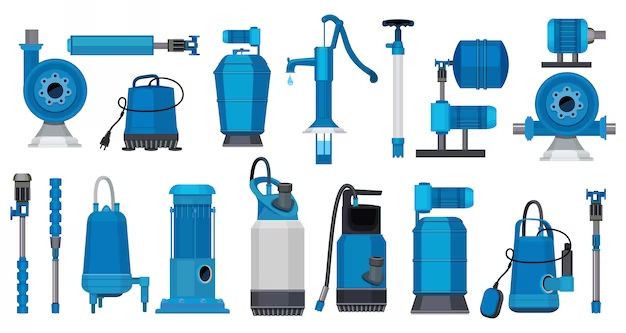Page Contents
Quick Answer
No, you cannot use a vacuum pump to change oil in a typical vehicle engine. While vacuum pumps can remove air and gases, they are not designed to extract thick fluids like motor oil. To change engine oil, you need tools designed specifically for draining and refilling oil, such as an oil drain plug wrench, oil filter wrench, and funnel. Using improper tools like a vacuum pump can damage engine components.
Vacuum Pump Basics
A vacuum pump is a device used to remove gas molecules from a sealed volume in order to leave behind a partial vacuum. There are many different types of vacuum pumps, but they all operate on the same basic principle. The pump has an intake opening that is connected to the volume that needs to be evacuated. It also contains a mechanism, such as a rotating vane or piston, that serves to physically pull air molecules out of the evacuated space.
Vacuum pumps work by creating a pressure differential – the pressure inside the pump is lowered compared to atmospheric pressure. This difference in pressure causes gas molecules to flow from the higher pressure volume (the engine) into the lower pressure pump. The gases can then be expelled from the outlet of the pump.
Common Types of Vacuum Pumps
- Rotary vane pump – Uses a eccentric rotating rotor with longitudinal vanes that slide in and out of the rotor wall to create suction.
- Piston pump – Uses a motor-driven piston that moves up and down inside a cylinder to create suction.
- Scroll pump – Uses two nested scrolls with one orbiting inside the other to create pocket volumes that transport and compress gases.
- Diaphragm pump – Uses flexible diaphragms that are acted on by eccentric cams or a piston to create suction.
- Diffusion pump – Uses high speed jets of steam or oil to direct air molecules out of the chamber.
Using a Vacuum Pump to Change Oil
While vacuum pumps can effectively remove gases and vapors, they are not well-suited for extracting viscous fluids like motor oil. Here are some key reasons why a vacuum pump cannot be used to drain engine oil:
Oil is Too Thick
Motor oil has a viscosity ranging from 5 to 24 cSt at 100°C. This is much thicker than air, which has a viscosity of around 0.02 cSt. The thick oil cannot be pulled through the vacuum pump easily and can clog intake ports and damage pump components. The pump may be able to extract some droplets of oil, but it will not be able to effectively drain the oil sump or oil filter housing.
Insufficient Suction
The amount of suction force a vacuum pump generates is measured in units of pressure, such as inches of mercury (inHg) or millibars. Most vacuum pumps can achieve between 25-29 inHg of vacuum. However, significantly more suction force would be required to lift viscous oil up from the bottom of the oil pan. This level of vacuum is difficult to achieve with typical pumps.
No Containment
Vacuum pumps are designed to compress and displace gases. They do not have any type of collection tank or container to hold extracted liquids. The oil would simply spill out of the pump outlet and make a mess. Proper oil changing requires collecting the old oil in a drain pan for safe disposal.
Oil Circuit Needs Pressure
Once the old oil is drained, the engine needs to be refilled with new oil. This is typically done through an oil fill tube using a funnel. Vacuum pumps cannot provide pressure to force oil into the closed engine lubrication system. A pressure pump or gravity pour is required to add new oil.
Proper Oil Change Procedure
Changing engine oil requires specific tools and procedures optimized for draining and refilling oil. Here are the general steps:
Supplies Needed
- Oil drain pan
- Wrench or socket for drain plug
- Oil filter wrench
- Replacement oil filter
- New oil in correct quantity
- Funnel
Drain Oil
- Run engine briefly to warm oil so it drains smoothly.
- Locate oil drain plug underneath engine.
- Place drain pan underneath to catch oil.
- Use wrench to remove drain plug and allow oil to drain.
- Replace and tighten drain plug once oil is fully drained.
Change Filter
- Use oil filter wrench to remove old oil filter.
- Inspect seal surface for debris. Clean if needed.
- Coat new filter gasket with fresh oil.
- Thread new filter on until gasket contacts the surface.
- Tighten filter an additional 3/4 to 1 full turn by hand.
Refill Oil
- Look up oil capacity for engine and have correct amount ready.
- Place funnel in oil fill spout.
- Pour new oil slowly and carefully to prevent spills.
- Check dipstick to ensure oil is at proper level.
- Start engine and check for leaks.
Following this oil change process with the proper tools helps ensure the job is done right. Rushing the job or using the wrong equipment like a vacuum pump can cause serious engine problems down the road.
Conclusion
While vacuum pumps are useful for evacuating gases from sealed spaces, they cannot be used to effectively change motor oil in a vehicle engine. The high viscosity of oil prevents it from being drawn through the pump. Additionally, vacuum pumps lack the suction force, containment, and pressure capabilities necessary for proper oil draining and refilling. Using makeshift tools to shortcut the oil change process may seem convenient initially but often leads to major engine damage over time. Investing in the correct tools and supplies for oil changes, and following detailed procedures, allows anyone to properly service their engine when needed.
